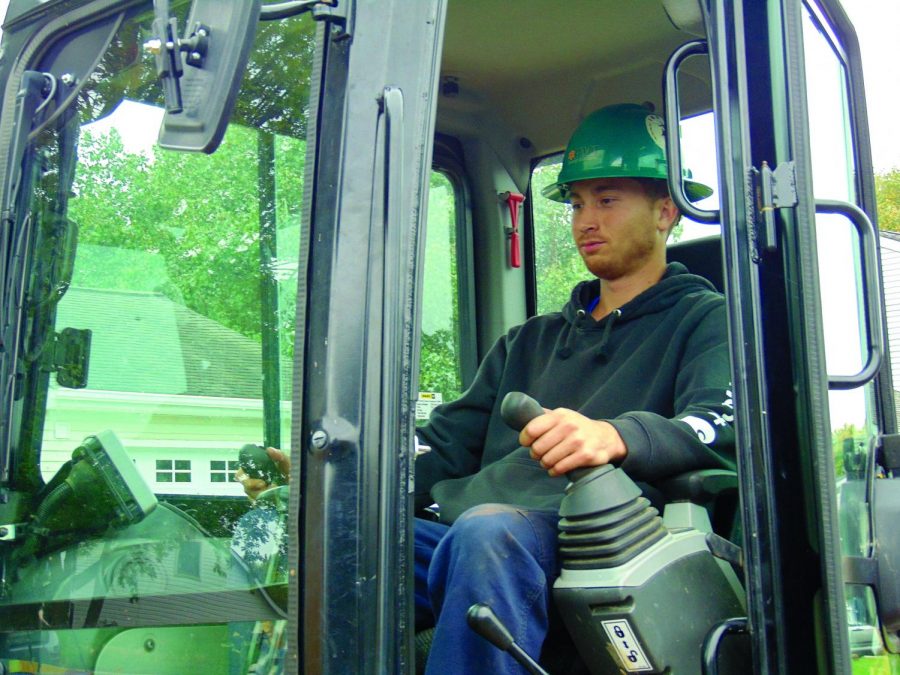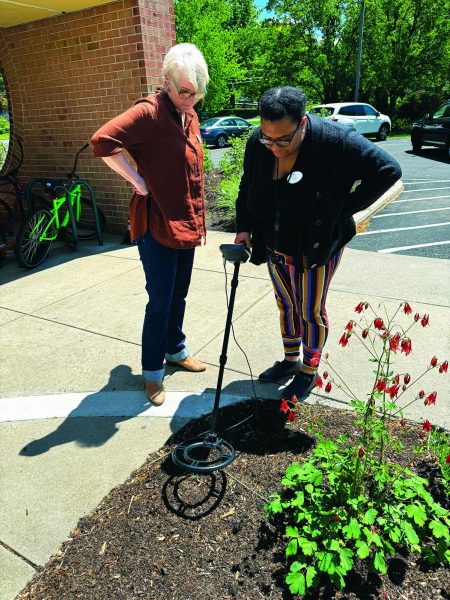Construction increases can impact environment
When construction rates increase, the local environment is affected. Water resources, animals, and humans are impacted while workers use anti-polluting and anti-endangerment procedures to decrease the harm.
Arrowhead photo by Hailey Riexinger
Working on the neighborhood…Trying to improve systems, construction worker Anthony Bryant completes his job. Bryant is a lineman apprentice for the Project Management Institute.
As infrastructure construction surges around the country, positives and negatives of the construction process are revealed when the surrounding environment changes and construction workers must find safe ways to continue their tasks to accommodate high demand for new housing, road and technology.
According to Souderton’s Students Against Violating the Earth (SAVE) club advisor Ian Burley, the construction is directly impacting humans, animals, insects, greenery and connected water routes.
Since there are bodies of water that flow into one another, if the water quality of one place changes, then the water quality of others will most likely follow.
Construction causes sediment pollution, the process of soil being integrated in the water.
The soil is exposed when land is disturbed.
The soil will flow into the creeks and streams that lead to bigger bodies of water, which harm the aquatic ecosystems.
According to Burley, there are laws in place to make the job more regulated.
“You’ll see things called ‘silt fences.’ It’s a fence that’s only knee high and is made out of this burlap-looking material. The water can pass through, but any soil, sediment, or pollution gets stuck. By law if a certain amount of ground is disrupted, you have to put up the silt fence,” Burley said.
Humans are also affected by this increase. Burley gives the example of a cement town where construction and digging is common.
“In the air, unbeknownst to you, was cement…little tiny microscopic particulates,” Burley said.
According to Burley, people are breathing it in, “all of the time,” with no awareness.
Over time it can build up and it might go so far as to clog the alveoli.
That’s how people develop Emphysema or Chronic Obstructive Pulmonary Disorder (COPD).
“Once you inhale it you are talking about fine particulates in the capillaries and delicate places of your lungs,” said Burley.
Burley said construction sites will still expel material, but their job is to “minimize” the amount, which Harleysville resident Emily Vincent agrees with.
“I also believe and hope that there is a lot of environmental attention being paid to how the design is crafted. There’s a lot of landscape architectural environmentalists that can help,” Vincent said about the construction that has been taking place across from her neighborhood.
Lately, Vincent, and numerous others, have spotted more foxes entering their neighborhood. Before construction began she had heard foxes in the night a couple of times, but never encountered one.
When construction started it wasn’t uncommon for her to see a fox walking on the border of the farmland being built on.
She assumed they were uprooted from their dens, but she was “pretty surprised” when one night, she and her husband returned home to see a fox in their front yard.
“Just the other day, my husband saw a fox, maybe the same one, again. In our yard again. This time it looked like it was hobbling on three legs, with an injury of some kind,” Vincent said.
Vincent thinks this could possibly be happening because of the fox’s recent human contact.
According to the African Conservancy, approximately 80% of the decline in global biological diversity is caused by habitat destruction. Wildlife habitat in the world is being destroyed at a rate of approximately 5,760 acres per day or 240 acres per hour.
Construction operator Robert Shirey said that workers attempt to maneuver around the endangered species.
“If there was an endangered species…they would actually try to find a way to go around that area,” Shirey said.
This is due to the Endangered Species Act, passed in 1973.







